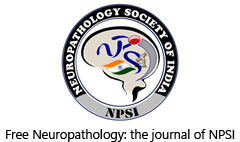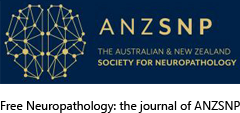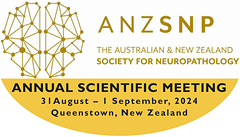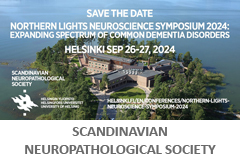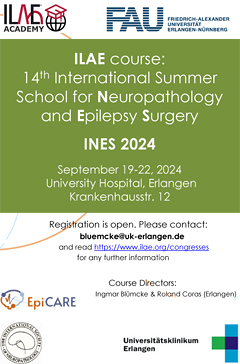Ex vivo MRI facilitates localization of cerebral microbleeds of different ages during neuropathology assessment
DOI:
https://doi.org/10.17879/freeneuropathology-2021-3638Keywords:
Alzheimer’s dementia, Cerebral microbleeds, Ex vivo magnetic resonance imaging, Hemosiderin, MicrohemorrhagesAbstract
Cerebral microbleeds (CMBs) identified by in vivo magnetic resonance imaging (MRI) of brains of older persons may have clinical relevance due to their association with cognitive impairment and other adverse neurologic outcomes, but are often not detected in routine neuropathology evaluations. In this study, the utility of ex vivo MRI in the neuropathological identification, localization, and frequency of CMBs was investigated. The study included 3 community dwelling elders with Alzheimer’s dementia, and mild to severe small vessel disease (SVD). Ex vivo MRI was performed on the fixed hemisphere to identify CMBs, blinded to the neuropathology diagnoses. The hemibrains were then sliced at 1 cm intervals and 2, 1 or 0 microhemorrhages (MH) were detected on the cut surfaces of brain slabs using the routine neuropathology protocol. Ex vivo imaging detected 15, 14 and 9 possible CMBs in cases 1, 2 and 3, respectively. To obtain histological confirmation of the CMBs detected by ex vivo MRI, the 1 cm brain slabs were dissected further and MHs or areas corresponding to the CMBs detected by ex vivo MRI were blocked and serially sectioned at 6 µm intervals. Macroscopic examination followed by microscopy post ex vivo MRI resulted in detection of 35 MHs and therefore, about 12 times as many MHs were detected compared to routine neuropathology assessment without ex vivo MRI. While microscopy identified previously unrecognized chronic MHs, it also showed that MHs were acute or subacute and therefore may represent perimortem events. Ex vivo MRI detected CMBs not otherwise identified on routine neuropathological examination of brains of older persons and histologic evaluation of the CMBs is necessary to determine the age and clinical relevance of each hemorrhage.
Metrics
Published
How to Cite
Issue
Section
License
Copyright (c) 2021 Sukriti Nag, Er-Yun Chen, Ryan Johnson, Ashish Tamhane, Konstantinos Arfanakis, Julie. A Schneider

This work is licensed under a Creative Commons Attribution 4.0 International License.
Papers are published open access under the Creative Commons BY 4.0 license. This license lets others distribute, remix, adapt, and build upon your work, even commercially, as long as they credit you for the original creation. Data included in the article are made available under the CC0 1.0 Public Domain Dedication waiver, unless otherwise stated, meaning that all copyrights are waived.










